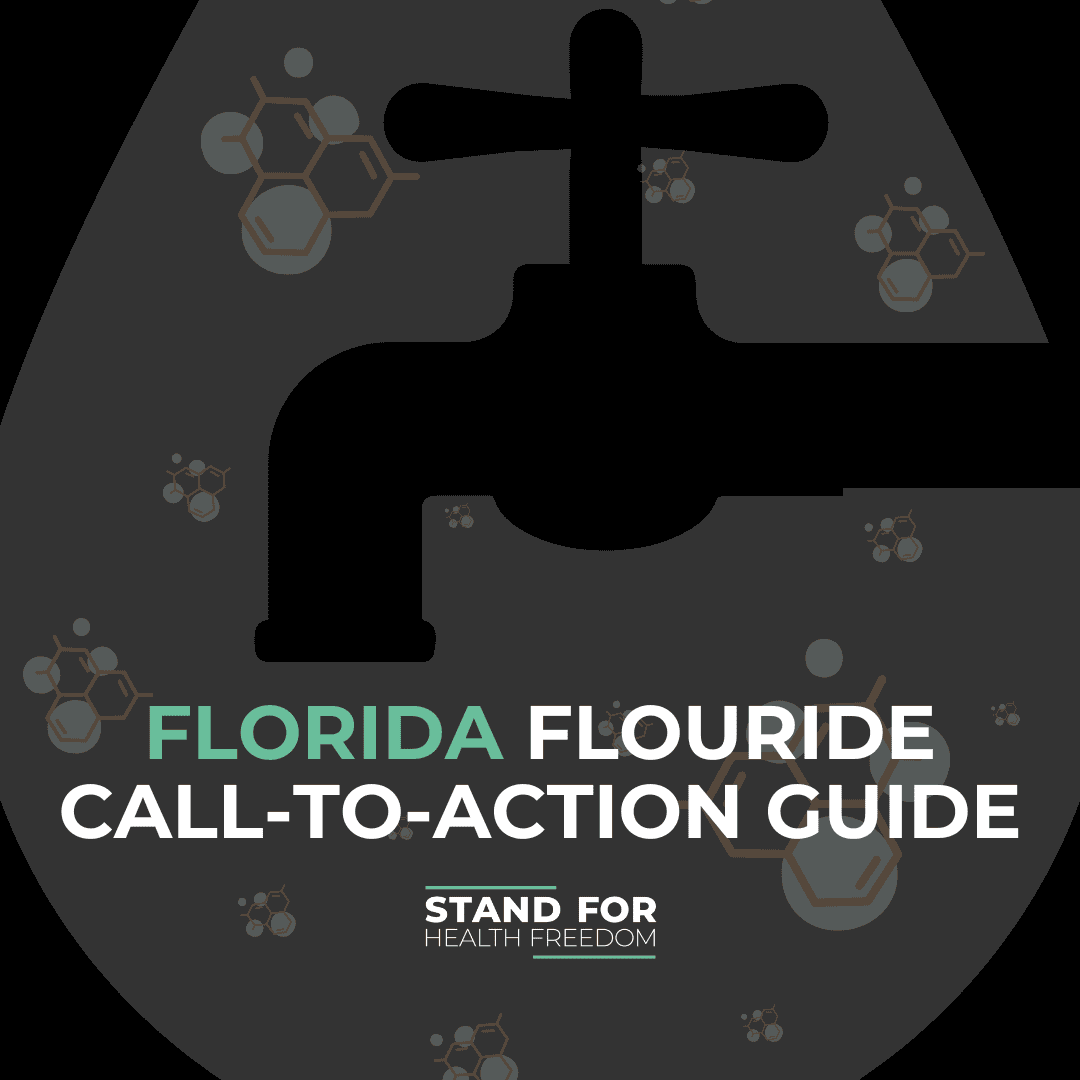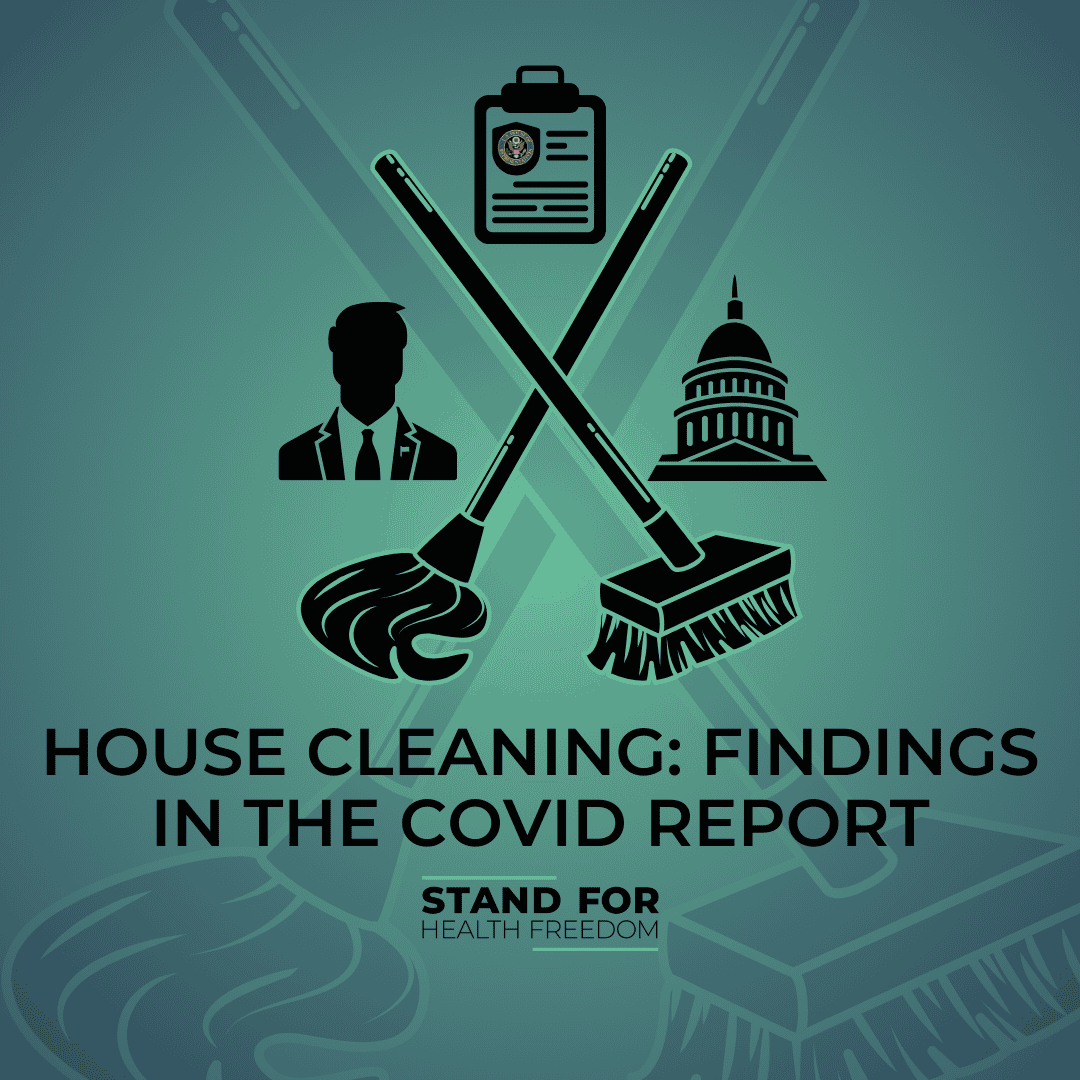“The greatest wealth is health.” – Virgil
Spring is in the air! It’s time for planting seeds. For the White House, this means the annual budget proposal for next year’s spending. It may seem a bit early to be thinking about 2024, like seeing Christmas décor at stores in October, but when you think of how slowly the government can move on certain things, it’s easier to wrap your head around it.
In politics, the seeds for what becomes public policy are planted well before it’s enacted. Some seeds never grow. Some take years to germinate. Some take off like wildflowers.
Why is the federal budget relevant to health freedom? It may seem disconnected, but it isn’t. The budget is the way our elected officials decide how to spend our tax dollars. It’s at the core of health policy because doing things requires money. For example, where did the CDC get the money to buy cell phone data to ensure Americans were complying with lockdown guidance? How about grant money or Medicare and Medicaid payments to incentivize states to treat COVID in a particular way, and to report medical status to the federal government? The money Americans give to the federal government though taxes enables these federal policies to take root in our communities.
The federal government has used money given to it by hard working and honest Americans, to target and trample on the protected free speech of those critical of its policies. Stand for Health Freedom first reported on this in 2021, when the “Disinformation Dozen” was singled out by President Biden as “killing Americans” simply by reporting on dangers of COVID policies, practices, and information from the government. Over the next two years, the federal government worked in secret with social media companies to suppress the speech of Americans. GreenMedInfo reported in detail on the way taxpayer money was funneled to nonprofits or think tanks that supported the attack on free speech, as revealed through Congressional investigations. This horrific activity by our White House highlights the need for Congress to check the power of the executive and its agencies, and one of the main ways that is accomplished under our US Constitution is the power of the purse. Congress gets final say in how money is spent, and how much discretion the president or his agencies have in choosing how to spend money allotted to them.
The 2023 budget highlighted the budget process at its worst. Some bills that health advocates watched for two years during the last Congress got stuffed into last-minute, impossible-to-digest budgets that were thousands of pages long and required a vote in hours, not months or days.[1]
We usually associate the CDC with public health policy, but the budget shows us the White House health surveillance agenda is about much more than the CDC. Agencies across the federal government, including some you may not expect, have a hand in health policy.
The federal government operates on a year that runs from October 1 to September 30 of the next year. In the first Congress in 1789, the year started January 1. Eventually, that shifted to July 1, which brought a sense of fairness because the incoming elected were forced to work with the budget of the previously elected congressmen. In 1977, the fiscal year was shifted again to October 1, which gave newly or re-elected congressmen more time to negotiate the next year’s budget. That leaves us with a process where, in an ideal scenario, the White House proposes a budget in February, then Congress reacts and makes its own edits from there.
Budget highlights for health freedom
[/et_pb_text]
Biden administration global health promises
Former President Donald Trump started the process of pulling the U.S. out of the World Health Organization (WHO). Of note, he also withdrew the U.S. from the Paris Accord, which creates a framework for monitoring greenhouse gas emissions. While the Paris Accord isn’t about health policy on its face, the environment and carbon credits are being sewn together into a tapestry that will become a digital identity, of which health credentialing and surveillance will be a central component.
Demonstrating the merge of environmental concerns with health policy, in 2021 President Biden created a new Office of Climate Change and Health Equity within the Department of Health and Human Services (HHS).[2] You will see this agenda come through health policy with lingo like “One Health,” “Sustainable Development Goals” (SDGs), “net zero,” and “whole-of-government” approach. The word “agenda” is used deliberately here, as a reference to the United Nations’ Agenda 2030, which outlines the path the United States has been taking.
Some of President Biden’s first actions in office were to reinstate the U.S. as a member of both the WHO and the Paris Accord. The president continued his commitment to a globalist approach to health over the next two years. Without the oversight of Congress, the White House has:
- proposed extensive amendments to WHO’s International Health Regulations, expanding the authority and scope of WHO tremendously, resubmitting them even after outcry by Americans;
- pledged support for a global pandemic treaty, which would include increasing the membership fees and other monetary contributions of taxpayer dollars to the unelected officials at the WHO;
- signed on to a declaration promoting the use of vaccine passports (and other UN SDGs), known as the Bali Declaration;
- created a compact with Mexico and Canada called the Declaration of North America (DNA), which includes pandemic preparedness, as well as security threats to North America; [3]
- been at the front of creating a global fund at the World Bank for pandemic preparedness, (and contributing hundreds of millions of American taxpayer dollars) to fulfill his dedication “[s]ince Day One of my Administration, I have called for a mechanism to catalyze global progress to prevent, detect, and respond to infectious disease threats.”
- been in favor of stripping American manufacturers of intellectual property rights in the name of a health emergency.[4]
What does an executive agreement have to do with the budget? Have you ever heard of an unfunded mandate? This is when the government says something must be done, but provides no funds for it. The corollary of that is, one part of the government could say something should happen, but another part will close the purse strings and say no.
It’s like a kid in a candy store spilling treats onto the counter and expecting a parent to pay. Congress has the power to say no.
“The Budget supports continued U.S. multilateral engagement on shared global challenges at the United Nations (UN) and other international organizations.”[5] Remember, the WHO is an arm of the United Nations. “The Budget also requests nearly $2.3 billion for contributions to multilateral development banks, maintaining the United States’ role as the largest World Bank donor to support poverty reduction and development in low- and middle-income countries.”
By our Constitution, treaties with other countries can only be made with “advice and consent” of 2/3 of the Senate. But around 90% of the international agreements made by presidents for decades have not gone through the Senate. In those cases, the president relies on his own authority in foreign relations, or he relies upon previous authorization from Congress.
It is likely the Biden Administration will claim Congress pre-authorized activities with the WHO. At the end of 2023, in addition to the budget Omnibus, there was a National Defense Authorization Act (NDAA), which was also a must-pass piece of legislation that ended up being thousands of pages long, full of pork that wouldn’t pass on its own. Buried in over 3,800 pages you can find the Global Health Security Act (GHSA) of 2022, which did not pass congress on its own, but rode its way to legislation stuffed into the NDAA like sausage. Since the NDAA was passed by Congress (though how many people were able to read it before voting on it was unknown), the language of the GHSA is considered the will of Congress. The language reinforces an American commitment to the UN, the WHO, to global health, to increasing spending on global health funds and more. The danger of the language in the NDAA on the GHSA is there’s no doubt the president will rely on this language as a pre-authorization for things like the pandemic treaty, as well as the whole host of other international health agreements.
Agency-by-agency health freedom watch
Please note this is not a comprehensive list from the thousands of pages of budget documents Congress is just starting to wade through. This list is meant to highlight some ways executive agencies are spending American tax dollars on constrictive health policy, and what more they are asking.
Health and Human Services: CDC
Overall, the president is asking for over $144 billion in discretionary budget authority for HHS, starting October 1, 2023. This would make HHS the second-most-funded agency in the federal government, after the Department of Defense.
- The budget will support a new Vaccines for Adults program to expand the Vaccines for Children (VFC) program that provides immunizations to uninsured people. The vaccines are purchased by the CDC and distributed to state governments. The proposed budget would increase the VFC budget from around $4.5 billion to over $6 billion.[6]
- The administration would allocate $15 million for HPV immunization as part of the $182.5 million increase request for the Cancer Moonshot, a “national goal” started by then Vice-President Biden in 2016, to cut cancer deaths in America in half by 2050.
- The CDC is proposing to consolidate 13 separate accounts that are used for specific spending only, into one account, so they can access funding more quickly.[7] This would totally remove the guardrails on spending by an agency that admittedly failed the public in the moment of greatest need during the declared COVID pandemic. The CDC’s “ability to draw on those resources to address critical emerging threats is limited by the structure of CDC appropriation.” In other words, the CDC will be able to take from whatever piggy bank they want, for whatever reason they see fit, unhampered by the 13 separate accounts Congress has created to keep their spending in line, accountable, and transparent for decades.
- A request has been made for $10.5 billion in “discretionary” funding the CDC can spend without having to point to a specific budget line-item or law “to build public health capacity at the CDC and at state and local levels” to more easily watch Americans and look for “emerging threats.”
- The CDC is requesting the budget for their Data Modernization Initiative more than double to $340 million.[8]That program supports things like expanding a pilot “data pipeline” for sensitive health information, including vaccine status. It would also accelerate an automated electronic case reporting system planned to “revolutionize public health case surveillance” by taking humans out of the equation.[9]
National Institutes of Health: ARPA-H
ARPA-H is the Advanced Research Projects Agency for Health, modeled after DARPA, a very successful military endeavor (Defense Advanced Research Projects Agency) that brought us technologies like the internet, the computer mouse, drones, and arguably laid the foundation for mRNA vaccines.[10] The 2023 Consolidated Omnibus Budget bill brought ARPA-H under the umbrella of the NIH.
The success of DARPA, which is meant to be mirrored in ARPA-H, is the flexibility those taking innovative risks have with choosing projects, partners, and funding sources.[11] President Biden’s intent when creating the agency was that it could move faster than the speed of science by allowing “project managers” to make many of the decisions about what to fund and study, even for grants over multiple years, without having to go through a lengthy peer-review or congressional process.
In the 2023 Omnibus budget, the ARPA-H allotment was $1.5 billion, which the White House wants to increase to $2.5 billion in 2024. There’s a vague assertion that ARPA-H will focus on priority areas of Biden’s Cancer Moonshot, dementia, and diabetes. The budget justification does little to paint a picture of what the funds would be used for specifically, as is the case with most other agency budgets.[12]
State Department
The Department of State is requesting a $370 million increase over last year’s budget, to bolster their presence in global health, including an $500 million for a pandemic fund.
Department of Defense
The Department of Defense has the largest discretionary budget of any agency, by far, to the tune of over $840 billion. The White House proposal boasts there is “robust” funding to support the Biden administration’s Global Health Security Agenda-related laws.
Department of Homeland Security
In 2021, a proposed Disinformation Bureau was put on pause after immediate outrage from the American people. But the administration didn’t stop there. The Department of Homeland Security has given out millions in grant money to combat domestic terrorism, which includes the spread of “misinformation, disinformation, and malinformation.” In 2021, DHS labeled disinformation a terrorist threat to America.[13] The organization Judicial Watch reported on a Targeted Violence and Terrorism Prevention Grant Program, with $20 million in grant money to pass out.[14] DHS has resources on “media literacy,” which includes ways to spot and address disinformation.
Department of Education
The 2024 fiscal year budget supports “full-service community schools,” including health and nutrition services.
Department of Commerce: Census Bureau
Many Americans may be interested to know how the Census Bureau has been used to collect health data. During the declared pandemic, a new initiative called “pulse surveys” were taken. These surveys allowed the federal government to monitor social and economic trends during lockdowns and beyond.
“The additional funding CEN-40 Exhibit 13 allows the Census Bureau to continue cooperation with other federal agencies to produce near real-time data at federal, state, and MSA levels, as needed, to support local, state, and federal policy and decision makers.”[15]
The March 2023 Household Pulse questionnaire includes questions on sexual identity and preferences, details on COVID shots and boosters (including identifying why a person is not up to date, and how a parent feels about the shot), employment and child care, how your family has reacted to inflation, how much you pay for basic necessities, and mental health such as whether a person can stop worrying.[16] This data is voluntarily given by Americans, and is justified by the COVID pandemic. If you’re curious about how your fellow Americans have answered these types of questions, you can check out the interactive tool on the Census Bureau’s webpage.[17]
National Science Foundation
This is the agency with the largest discretionary budget request in the FY2024 proposal. The NSF funds innovations in science. It boasts a Nifty-50, which are “NSF-funded inventions, innovations, and discoveries that have become commonplace in our lives.”[18] Among them are “edible vaccines,” and the NSF takes credit for funding “research that has developed much of the knowledge and many of the tools necessary to engineer plants in order to deliver vaccines in an edible form.”[19]
The above list is by no means comprehensive. The budget documents across all federal agencies are thousands and thousands of pages. Check the references for links to primary source budget documents and watch for SHF updates on the process!
The time is now to educate the budget committee on how the White House requests for more funding will hurt the ability for Americans to exercise informed consent. Throughout multiple federal agencies, taxpayer money is flowing to reduce the privacy of health data, giving more authority to agencies or organizations who have demonstrated they will put their ideas for public health over the constitutionally protected rights of individual Americans.
The budget process is just getting started. Let Congress know we are watching, and that health freedom can be protected by closing the purse on the weaponization of health policy.
Steps you can take
Step One: Money is power, and Congress must use it to stop the White House agenda for a health-surveillance state. Click the button below to quickly send a pre-drafted (or customized) message to the House lawmakers who oversee most health-related spending.
Step Two: Americans need to make sure their elected officials understand the urgency and severity of global health plans. Click the button below to send letters both to your congresspeople and to the House Foreign Relations Committee to support HR79, the WHO Withdrawal Act.
Step Three: Knowledge is power. Know your rights! Stay in the know with SHF’s free printable resources on topics like the WHO, parenting rights, religious exemptions, and more. Click the button for a page full of free quick-read printables. Share them with your friends as an easy way to introduce difficult topics, or bring them with you when you talk to legislators for at-a-glance issue spotting.
References & Sources
[1] https://www.appropriations.senate.gov/imo/media/doc/JRQ121922.PDF
[2] https://www.whitehouse.gov/briefing-room/presidential-actions/2021/01/27/executive-order-on-tackling-the-climate-crisis-at-home-and-abroad/
[3] https://www.whitehouse.gov/briefing-room/statements-releases/2023/01/10/declaration-of-north-america-dna/
[4] https://www.forbes.com/sites/lorenzomontanari/2021/05/12/bidens-undermining-of-us-intellectual-property-rights-is-dangerous-and-will-hurt-pandemic-response/?sh=86420534890e
[5] https://www.whitehouse.gov/wp-content/uploads/2023/03/budget_fy2024.pdf (page 40)
[6] https://www.cdc.gov/budget/documents/fy2024/FY-2024-CDC-congressional-justification.pdf
[7] https://www.cdc.gov/budget/documents/fy2024/FY-2024-CDC-congressional-justification.pdf (page 34)
[8] https://www.cdc.gov/budget/documents/fy2024/FY-2024-CDC-congressional-justification.pdf (page 214)
[9] https://www.cdc.gov/budget/documents/fy2024/FY-2024-CDC-congressional-justification.pdf (page 215)
[10] https://gizmodo.com/interview-with-darpa-director-on-20-years-of-invention-1849158793
[11] https://www.forbes.com/sites/brucelee/2021/07/06/president-biden-proposes-arpa-h-new-65-billion-health-entity-to-transform-how-research-is-done/?sh=7fcba4fd4dab
[12] https://arpa-h.gov/assets/files/ARPA-H_FY_2024.pdf
[13] https://www.dhs.gov/sites/default/files/ntas/alerts/21_0813_ntas_bulletin_all-sectors.pdf
[14] https://www.judicialwatch.org/millions-in-dhs-prevention-grants/
[15] https://www.commerce.gov/sites/default/files/2023-03/Census-FY2024-Congressional-Budget-Submission.pdf (p 48)
[16] https://www2.census.gov/programs-surveys/demo/technical-documentation/hhp/Phase_3-8_HPS_Questionnaire_English.pdf
[17] https://www.census.gov/programs-surveys/geography/data/interactive-maps.html
[18] https://nsf.gov/about/history/nifty50/index.jsp
[19] https://nsf.gov/about/history/nifty50/ediblevacc.jsp







